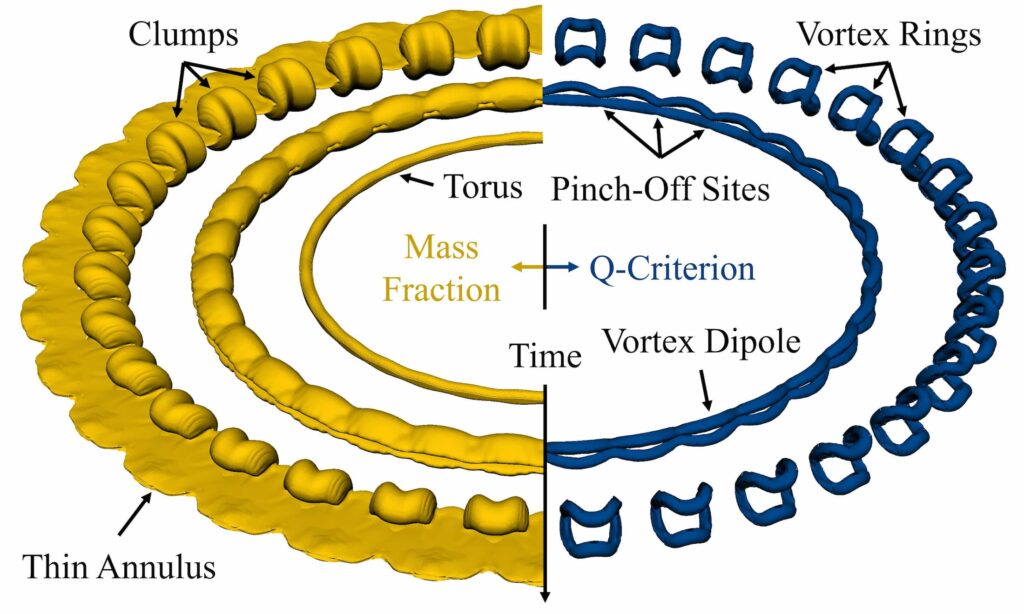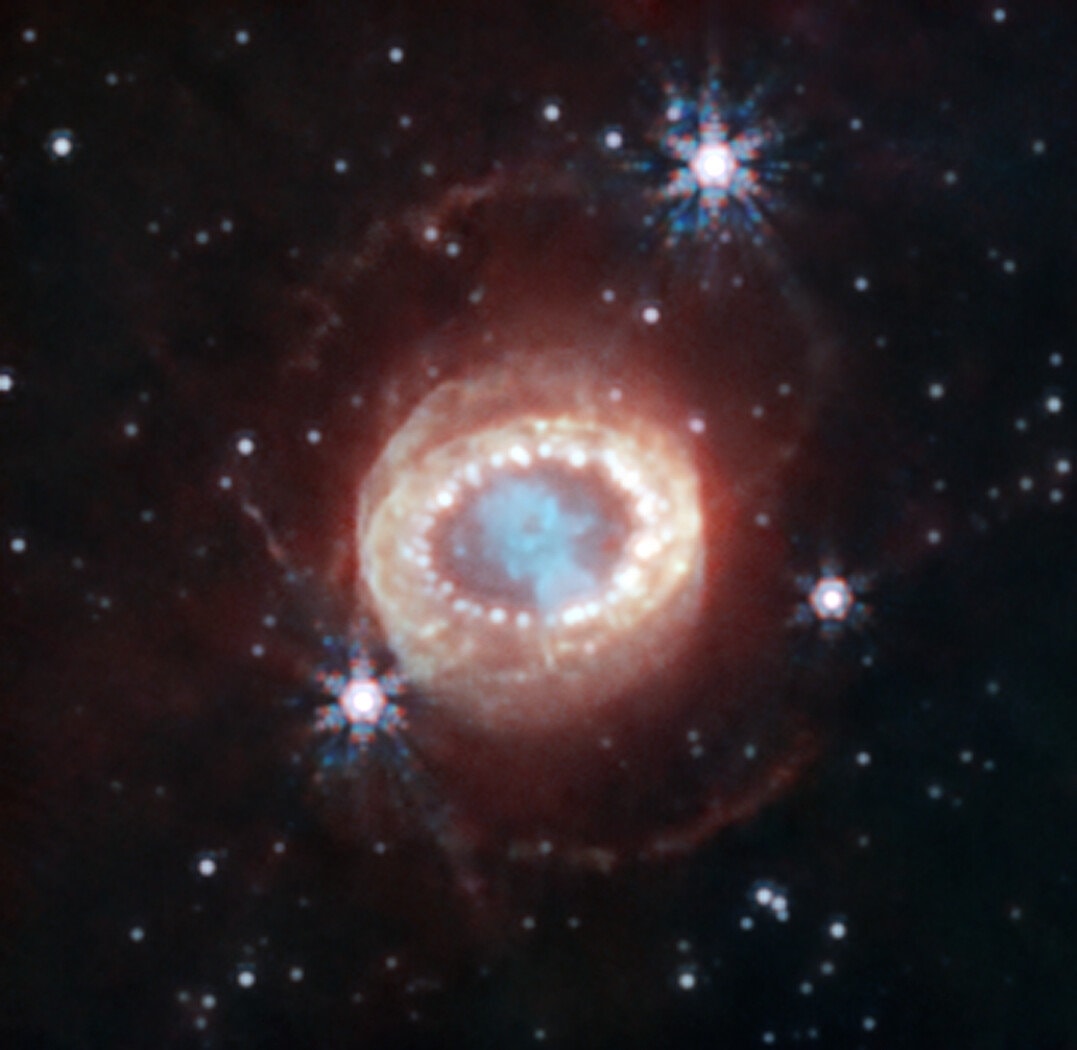MICHIGAN ENGINEERING – Physicists often turn to the Rayleigh-Taylor instability to explain why fluid structures form in plasmas, but that may not be the full story when it comes to the ring of hydrogen clumps around supernova 1987A, research from the University of Michigan suggests.
In a study published in Physical Review Letters, the team argues that the Crow instability does a better job of explaining the “string of pearls” encircling the remnant of the star, shedding light on a longstanding astrophysical mystery.
“The fascinating part about this is that the same mechanism that breaks up airplane wakes could be in play here,” said Michael Wadas, corresponding author of the study and a graduate student in mechanical engineering at the time of the work.
In jet contrails, the Crow instability creates breaks in the smooth line of clouds because of the spiraling airflow coming off the end of each wing, known as wingtip vortices. These vortices flow into one another, creating gaps—something we can see because of the water vapor in the exhaust. And the Crow instability can do something that Rayleigh-Taylor could not: predict the number of clumps seen around the remnant.

“The Rayleigh-Taylor instability could tell you that there might be clumps, but it would be very difficult to pull a number out of it,” said Wadas, who is now a postdoctoral scholar at the California Institute of Technology.
Supernova 1987A is among the most famous stellar explosions because it’s relatively close to Earth at 163,000 light years away, and its light reached Earth at a time when sophisticated observatories existed to witness its evolution. It is the first supernova visible to the naked eye since Kepler’s supernova in 1604, making it an incredibly rare astrophysical event that has played an outsized role in shaping our understanding of stellar evolution.

While much is still unknown about the star that exploded, it is believed that the ring of gas surrounding the star ahead of the explosion came from the merger of two stars. Those stars shed hydrogen into the space around them as they became a blue giant tens of thousands of years before the supernova. That ring-shaped cloud of gas was then buffeted by the stream of high-speed charged particles coming off the blue giant, known as a stellar wind. The clumps are believed to have formed before the star exploded.
The researchers simulated the way the wind pushed the cloud outward while also dragging on the surface, with the top and bottom of the cloud being pushed out faster than the middle. This caused the cloud to curl in on itself, which triggered the Crow instability and caused it to break apart into fairly even clumps that became the string of pearls. The prediction of 32 is very close to the observed 30 to 40 clumps around the supernova 1987A remnant.
“That’s a big piece of why we think this is the Crow instability,” said Eric Johnsen, U-M professor of mechanical engineering and senior author of the study.
The team saw hints that the Crow instability might predict the formation of more beaded rings around the star, further out from the ring that appears brightest in telescope images. They were pleased to see that more clumps seem to appear in the shot from the James Webb Space Telescope’s near-infrared camera, released in August last year, Wadas explained.
The team also suggested that the Crow instability might be at play when the dust around a star settles into planets, although further research is needed to explore this possibility.
The study was supported by the Department of Energy, with computing resources provided by the Extreme Science and Engineering Discovery Environment
Co-authors of the study are: William White and Aaron Towne, a graduate student and an assistant professor in mechanical engineering, respectively; and Heath LeFevre and Carolyn Kuranz, a research fellow and an associate professor of nuclear engineering and radiological sciences, respectively; all at U-M.
Written by Kate McAlpine, Michigan Engineering

